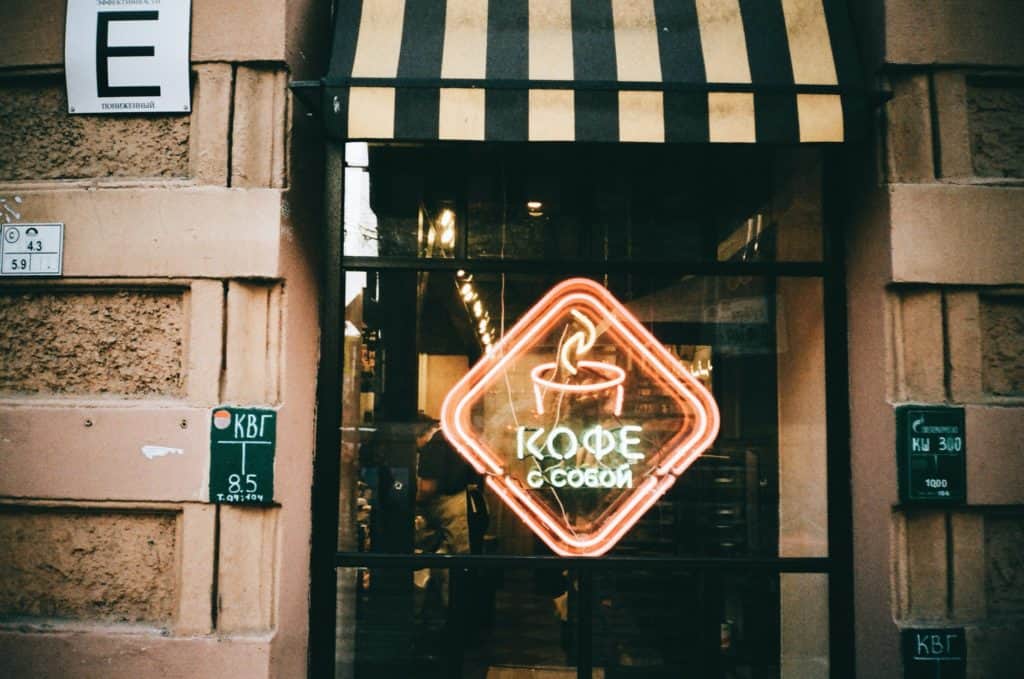Going into business is one of the most liberating experiences that you can ever strive for. Not only will it give you the potential to earn an unlimited amount of income, but it will also give you the satisfaction of being your own boss, being in control of your own time, and to some degree — being in charge of your own destiny.
Entrepreneurship, as a matter of fact, is not just a destination that will ensure that you live in greener pastures, it is a journey that will allow you to have a greater sense of who you are, and what you are capable of.
In order for us to understand the journey of entrepreneurship better and to discover how to set goals in business in a more proficient way, we will use the example of a simple coffee shop. After all, who does not enjoy being in a nice ambient coffee shop? Waking up your census with a nice hot cup of Joe while listening to the relaxing acoustic tones that one has become accustomed to when hanging out at one of these coffee shops.
Here is our guide to setting goals for business properly in the context of a coffee shop and choosing relaxing acoustic tones that one has become a custom to when hanging out at one of these coffee shops. Here is our guide to setting goals for business properly in the context of a coffee shop.
Finding Inspiration
As you can probably tell, the first thing that you need to do when opening up a coffee shop is to do a little bit of research about the coffee business and finding your true inspiration for wanting to open a coffee shop in the first place.

It takes a lot of investment in terms of time and finances to open a coffee shop. In order for you to avoid making mistakes that could potentially be very costly for you, you have to talk to local business owners that are in the field and try to find out what has worked for them and what has caused them to fail.
This can be a very fun journey for you because you get to try different cafés and talk to different people. Not only will you get to learn their tips and tricks for owning a successful coffee shop, but you get to find out why these people started one of the shops in the first place. Financial tips, after all, are very valuable but perspectives about one’s mission and vision for starting a company are truly priceless.
Making The Right Business Plan
Once you have found your inspiration for starting a coffee shop, the next thing that you need to focus on is implementing the correct business plan.
The biggest mistake that new entrepreneurs make is to skip the creation of a business plan entirely because they think that it is unnecessary work and they are usually associated with larger companies with more robust manpower. They do not believe the business plans concern ventures that are as small as what they are trying to create. You have to remember that no matter how small a task, you can never accomplish it without the correct blueprint.
That is why making a business plan is of the utmost importance. Your business plan ideally should include a summary of what your business is all about and what the core product of your business is. We should also do a short feasibility study of your target market, the people in your area that are likely to enjoy your coffee.

You should also define what kind of team you want to have — who are the people you would trust to carry out your vision and turn it into a reality? You should have a concrete plan for marketing so that you can compete with larger and more established coffee shops. You should also have at the very least a basic idea of what you expect in terms of revenues and profits.
Choosing a Location
As with all businesses that involve relying on heavy foot traffic and play into a certain type of demographic — it is all about location, location, location. It cannot be stressed enough how important location is when it comes to building a coffee business.
Try to write down a list of areas that you would consider building your coffee shop in and then start paying closer attention to those areas. What is the visibility of that location like? Do a lot of people pass by that area? If they do – are they in a rush or would they have the time to even stop by your coffee shop? How many establishments are around the area that could possibly compete with you for foot traffic?
You have to think about these things very very carefully and you cannot jump the gun right away when it comes to picking a location. Of course, more expensive locations would mean better foot traffic but since you are just getting started, spending extra time to find the absolute right deal will only play to your advantage even more.
Finding Suppliers
Now that you have taken care of the location and concept of your coffee shop, it is time to find the best suppliers and sources for commercial equipment. Remember — your product as a coffee shop owner relies on a finite resource With a very volatile price much like any other commodity. That’s right, you are working with coffee beans.
Not only that but you have to consider other essentials as well such as coffee, bread, produce, and other groceries. Where are you going to be getting these things from? If you get them from the supermarket just like any other person would, you may not be getting the best deal in terms of capital expenditures. Try to find a supplier who can give you the right balance of price and value — your supply chain can make or break your coffee shop.
Designing Your Coffee Shop
The next thing that you should focus on naturally is the look and feel of your coffee shop. When it comes to attracting the right customers for your business, first impressions are indeed very important. Do you want your coffee shop to look unique and enticing and uniform without being too overwhelming?
What is it that you were trying to get your customers to feel when they enter your coffee shop for the first time? Do they prefer sophistication or a casual laid-back atmosphere? Do you want your coffee shop to look more modern or more retro? The design of your coffee shop is the most glaring aspect of the personality of your business, the personality that your target customers will associate with your brand so you have to think about this very carefully.

Curating The Perfect Menu
Now, do you have the design for your store the next thing that you need to focus on is your menu? Remember, the same old flavors in the same old drinks are simply not going to cut it. When it comes to crowd favorites, larger coffee shop chains like Starbucks are going to out of class you in every single way.
For your coffee shop, you are going to want to bring something new to the table, something that is uniquely identifiable to you. That doesn’t mean that you are not going to serve a classic latte, cappuccino, macchiato, or Americano — but that doesn’t mean that you cannot add a little bit of a twist to all of these drinks. Try to be as unique as you possibly can because remember, it is all about being consistent with your brand personality.

Finding The Right Team
Of course, you can forget about the idea of turning your business streams into a reality without the right team by your side. Having the right team by you is arguably the most important aspect of having a successful company, a coffee shop company, or otherwise. When you hire your staff, you are not just looking for competence and experience — you are looking for a team of people who share the same vision for the business as you.
At the very least, they should be people Who are easy to communicate with and who have the same values as you. If you do not transmit on the same wavelength as the people that you work with on a daily basis, it simply is never going to work.
Getting Your Coffee Known
The last step, of course, is finding a way to get your coffee known. This is very important because you are a new player in the game and people are not going to want to give you a chance if you do not give them a very tangible reason to. Try to come up with a unique slogan that is easy to remember and is very witty. It should be something people are going to remember subconsciously so that they think about your coffee shop every time they think about that slogan.
Make sure your color palettes for your branding kits are all aligned because after all when you see coffee with the color is white and green you immediately think Starbucks — do not underestimate how visual people can be. Find a way for your customers to associate with your brand based on things that they do not have to actively think about.

Getting Funding
Now that you have completed the very important step of setting the right infrastructure in place so that your business can scale successfully there is no doubt that you are ready to get started. You will not be able to truly get started, however, if you do not have adequate funding in place.
This may not be a problem if you are somebody who plans for this for a very long time and has the right amount of fun set up – but if you are somebody who needs a little bit of financial assistance in order for you to get started there are several options available for you as well.
These options range from securing funding from angel investors, getting start-up loans that are backed by the United States government, or getting business lines of credit that allow you to spend money as you go.
You can even source your funding from complete strangers and websites that are geared towards helping start-up businesses like you get the capital that they need through crowdsourcing. Let us explore each and every one of these options now so that you can determine which one of these is best suited for your needs.
Angel Investors
The first option that you can turn to if you are in need of funding is to pitch your idea to an angel investor. Angel investors are basically very high net worth individuals who want to allocate funding towards start-up businesses in exchange for equity in the company.
The only thing you have to keep in mind when pitching your coffee shop to an angel investor however is that you really have to be unique and you need to be excellent in making your business sound distinguished.
The reason for this is simple – why would an angel investor give you money to start an ordinary and very plain coffee shop? That angel investor has the funds, so why doesn’t he just start a coffee shop himself?
Know what makes you unique and master your selling points, then you will be able to get an angel investor to bite.
Crowdsourcing
crowdsourcing is a fairly new way of getting funding but it is one of the most advantageous because the money that you will be able to receive is truly unencumbered. This means that it is not alone because you do not have to pay the money back and it is not similar to a venture capital investment because you do not have to give away any of your equity. You are just selling your vision to a bunch of people who are willing to help you achieve your goal with a little bit of their money. Of course,
You really have to be excellent at selling your vision because you are basically convincing strangers to buy into your vision and give you money for free. If you do not know what makes your coffee shop unique, you may not be able to meet your funding goals because you won’t convince many people that it is something worth building.
Startup Loans
Perhaps one of the more traditional ways of earning funding for your new coffee shop is just to get a start-up loan. If you have a little bit of traction in business already and you can prove consistent earnings then you will qualify for most business loans, no problem.
If you are truly new to business and you do not have any kind of a track record, however, then you might consider a loan that is more suited to start-ups. One such loan is something called an SBA loan.
The reason why SBA loans are so attractive to new start-ups is because they eliminate the greatest fear that most financial institutions have when being asked for funding from a company that is very new.
SBA loans are guaranteed by the United States government so there is basically no risk for the financial institutions who partner with SBA and they will be more considerate when offering funding.
Lines of Credit
Another more traditional way of getting the funds that you need for your coffee shop is to apply for business lines of credit or business credit cards. Business lines of credit are advantageous compared to business loans because you are essentially just borrowing what you need, you do not run the risk of borrowing too much or too little the way you would if you went with a business loan instead.
A business line of credit is basically just a way for you to pay for capital expenditures as you go, making sure that you are not tempted to spend any of the money erroneously.
Setting SMART Goals
So now that you know how to set up a coffee shop business, it is time to try to figure out how you can achieve your goals. After all, what would a business be without goals?
Without goals, there wouldn’t be a reason to start a business in the first place. When you started your business, was it so that you could earn an unlimited income? Was it so that you can achieve complete autonomy over your time and schedule? Was it so that you can get away from the job that you used to have that you didn’t really like so that you can pursue something that you feel is more worthy?
Just as you had your personal goals for starting a company — your company itself should have goals. Not just any goals mind you, but smart goals. Of course, we are not talking about smart in the traditional sense, but The acronym S.M.A.R.T. What does this mean? Let’s take a look with greater detail.
Specific
The S in Smart stands for specific. Because the world of business is very competitive and very cutthroat, you need to know exactly what you need to achieve and how you’re going to get there. You cannot afford to be vague with any aspect of your business so you have to define all of your use cases very well. Of course, the easiest way, to set specific goals is by simply asking yourself who, what, when, where, why.

- Who
When you are making your goals, who are the people that are involved in this goal? if your goal, for example, is to increase your revenue by 20% in the next year — who are the people that you can involve so that you will have a more realistic chance of achieving this goal?
- What
Ask yourself what it is you want to accomplish. You may think by default that you already know, but writing what your goals are for the short term and long term out on paper can give you a clearer picture of what it is you were trying to accomplish in the first place so that you do not lose focus, and you do not get off track.
- When
Now that you know what you want to accomplish, ask yourself when you want to accomplish this. If your goal is to have 10 branches of your coffee shop within your city, when do you want to accomplish this? Do you feel that this is something that you can make into a reality within the next five years? Is 10 years more realistic to accomplish this goal?
- Where
Where do you believe these goals are to be achieved? If you are going to create the best possible coffee shop, is this something that you want to keep local? Do you plan on expanding your operations towards different cities in the same country? Do you feel that you can actually go global and create an internationally beloved coffee shop brand?
- Why
Of course, the most important question of all is why. Why do you want to accomplish this goal? Do you want to accomplish this goal for personal gain or is it something that you want to achieve for the sake of your staff or the business as a whole? Why do you want to increase your revenue by 20% over the next year? Is it so that you can have a bigger owner’s draw, pay back your loans, hire more staff, or expand a new location?
Measurable
Of course, an important thing to consider about going is that you will never really know if you have accomplished it or not unless you justify it with numbers. You have to find a way to quantify your goals so that you can realize more explicitly if you have achieved them or not.
This is obviously far more simple if your goal has something to do with revenue or profit because those are easily quantifiable. But when it comes to things like increasing your brand value — then you are going to have to be more creative when it comes to finding ways to measure your progress towards achieving that goal.
- How To Tell If You’ve Accomplished Your Goal
When it comes to goals that are more difficult to measure with raw numbers– you are going to have to rely on non-traditional ways of finding out whether or not you’ve made it. It is easy to tell if you’ve accomplished your goal if your goal was to create five branches of your coffee shop because, obviously, you can count the number of coffee shops that you currently have.
When it comes to more abstract goals like increasing your brand value, however, you can just ask yourself questions like how well do the people in that particular community know your business? If you tell them the name of the coffee shop — will they even know where the coffee shop is? If you ask them about the quality of the coffee that you serve, will their sentiments be more positive or negative? Doing a simple survey using a pretty healthy sample size could be a good way to tell if you’ve accomplished your goal.

- How Do You Define Progress?
Of course, you should also be able to track how far you have come as far as accomplishing your goals is concerned. It is not enough to just measure your goal in terms of whether you have accomplished it or not, you also need to be able to tell if you were making progress.
If you want to become an internationally known coffee shop brand, how many branches do you have this year compared to last year? How much of the capital expenditures that you will need to go global have you already saved up? These are just a few key indicators of whether or not you are making progress towards achieving your goals.
Achievable and Realistic
Even though you obviously want to get big as far as setting goals for your coffee shop is concerned, you want your goals to be grounded in reality. This is not to say that you cannot become a huge multinational corporation, but you happen to have a realistic grip of what is possible with the resources that you have available to you at the moment in order for you to set realistic goals and meet realistic timelines.
- Are My Expectations Realistic?
Let’s just say that you answered the previous what and when questions by saying that you want to become the largest coffee shop brand in the United States of America and you want to be able to accomplish this within the next five years. You have to keep in mind that the largest coffee shops in the United States such as Starbucks took decades before they were able to reach the level of prominence that they enjoy today.
You cannot be overconfident no matter how good you think your product is and no matter how competent you think your team members are. By being more realistic with your Expectations you can make your goals far more achievable.
- Has This Been Done Before?
Those who do not learn from the past are destined to repeat it. Having that in mind, are you sure that the steps that you were taking will not lead you into unexpected pitfalls? Maybe you were offered funding by a venture capital firm and you chose to take on a round of funding that is far more robust than what your profits can justify.
Will you be able to meet the new valuations that are associated with your company? If not – this could cause you to absolutely crash and burn. You have to take a look at what has been done before and what has not been done before because they are that way for a reason.

Timely
Because of the previous point, it should be fairly obvious that all your goals, in order to be truly smart, need to have realistic timeframes. Try to find out what your short-term goals are and work towards those in the short term well in the meantime, identify your long-term goals also and try your best to plan for those.
Starting Your Coffee Shop Right with Great Goals
Hopefully, by now you will have a better idea of what it takes to plan your next business venture in the form of a coffee shop. Remember that these are concepts that you can apply to any type of business, you are limited only by your imagination. today you were just building a humble coffee shop, tomorrow you could be building a multi-billion dollar empire. As Steve Jobs once said — stay hungry, stay foolish.


